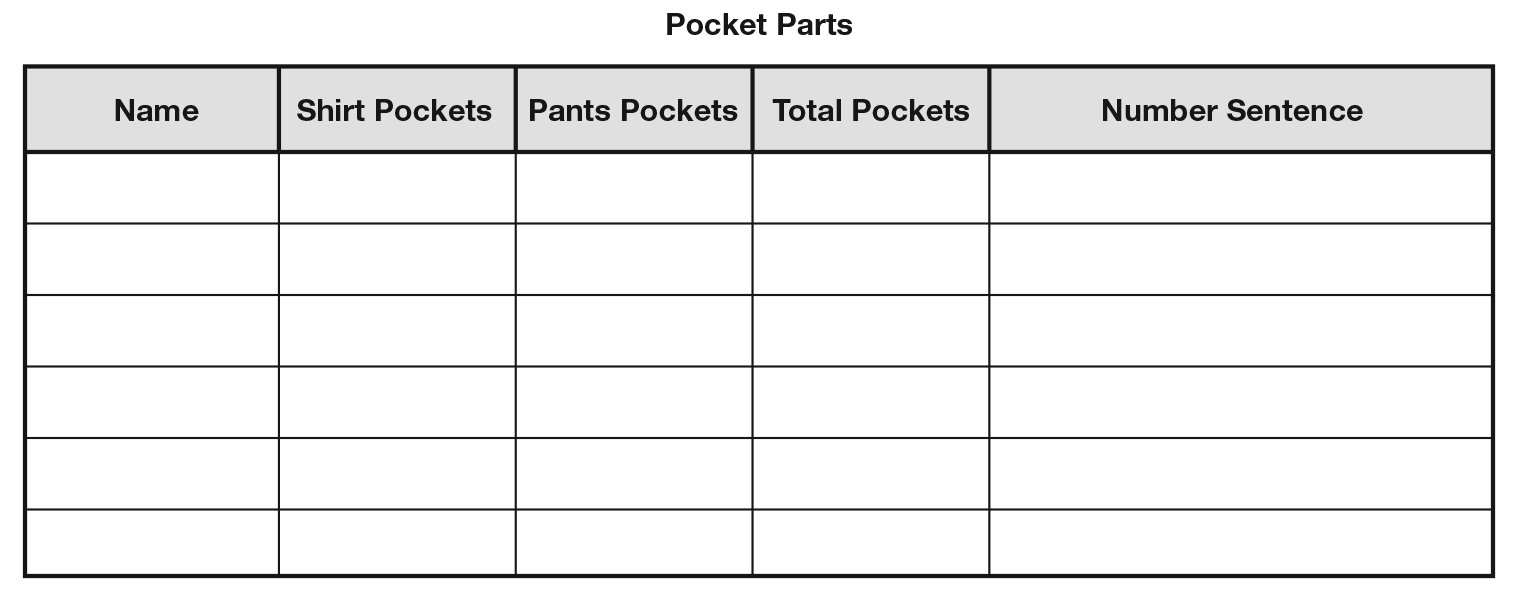Pockets on student clothing are used as the context for exploring part-whole relationships of numbers. The techniques used here serve as a bridge from concrete representations (pockets) to symbolic representations (numbers). Students gather data, record it, write number sentences, and discuss the part-whole relationships.
Content in this Lesson
- Explaining a strategy for solving an addition problem [MPE5].
- Discovering the part-whole relationship of numbers [E3].
- Making connections between representations of quantities using connecting cubes, counters, and symbols [E2].
- Solving addition problems using the counting-on strategy [E5].
- Using tools (e.g., connecting cubes and counters) to solve two- and three-part addition problems whose sums are less than 20 [E7].
- Representing addition situations with number sentences [E6].
- Developing math facts strategies by partitioning numbers.
Daily Practice and Problems I–L
Assessment in this Lesson
| Assessment | Expectation Assessed | Math Practices Expectation Assessed |
|---|---|---|
|
Shirt and Pants Pockets Observe Student Activity Book Pages 43–44 |
|
|
|
How Many Pockets? Student Activity Book Pages 47–48 |
|
|
|
Checking Pockets with Feedback Box Student Activity Book Pages 49–50 |
|

















